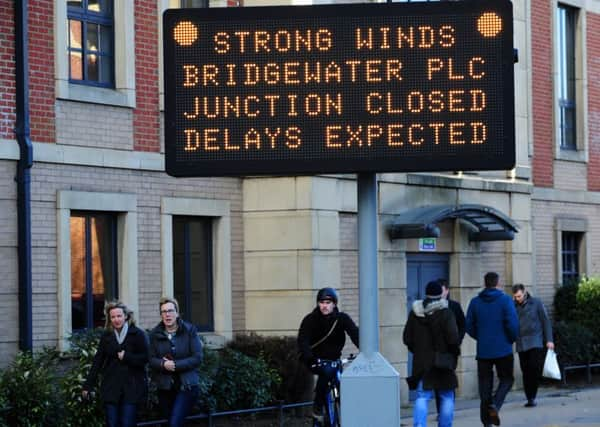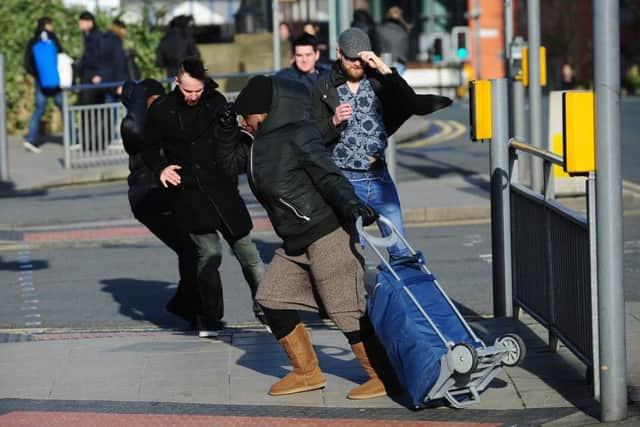Final go-ahead due for work at notorious Leeds '˜wind tunnel' junction


Leeds City Council’s executive board will be asked on Wednesday, February 10 to formally approve the development agreement that includes giving permission for a series of “baffles” to be installed over the highway.
The building’s owners, CPPI Bridgewater Place, are responsible for putting right the wind tunnel effect created by Yorkshire’s tallest skyscraper.
Advertisement
Hide AdAdvertisement
Hide AdThis has led to a number of incidents, including the tragic death of Dr Edward Slaney when a lorry blew over onto him in 2011.


Detailed preparatory work has already been taking place, with full planning permission from the council already granted.
Included in the agreement are binding conditions on the building’s owners to test and maintain the baffles and deal with any continuing problems around the building.
Councillor Richard Lewis, Leeds City Council’s executive member for regeneration, transport and planning, said: “We have been pushing hard for a very long time to ensure that the dangers caused to the public by Bridgewater Place are dealt with as fully as possible and to the very highest of safety standards.
Advertisement
Hide AdAdvertisement
Hide Ad“At every stage of this process we have been lobbying intensely for the best possible solution as anything less would have been unacceptable for public safety.


“This has not happened as fast as we would have liked as there were many complex technical, legal and other considerations to be worked through. However we continued to press throughout for a high calibre solution to protect the public from the unacceptable wind hazards caused by the building.”
At their meeting, councillors will be told that rigorous modelling and testing of the design demonstrates that it is “effective in mitigating the local ground-level wind speeds as far as practically possible within the confines and restrictions of the site”.
The scheme comprises a series of baffles over the road and a number of canopies and screens on and near the building, along with adjustments to the layout of the highway. Councillors are asked to note that after construction there will be further expert wind testing. This is aimed at pinpointing any “hotspot areas” that may need additional street level works.
Advertisement
Hide AdAdvertisement
Hide AdOnce the agreement is in place the contractors appointed by the building’s owners are expected to start work on the full scheme in March.
Work is expected to last 50 weeks and will involve extended closures of Water Lane at intervals throughout.